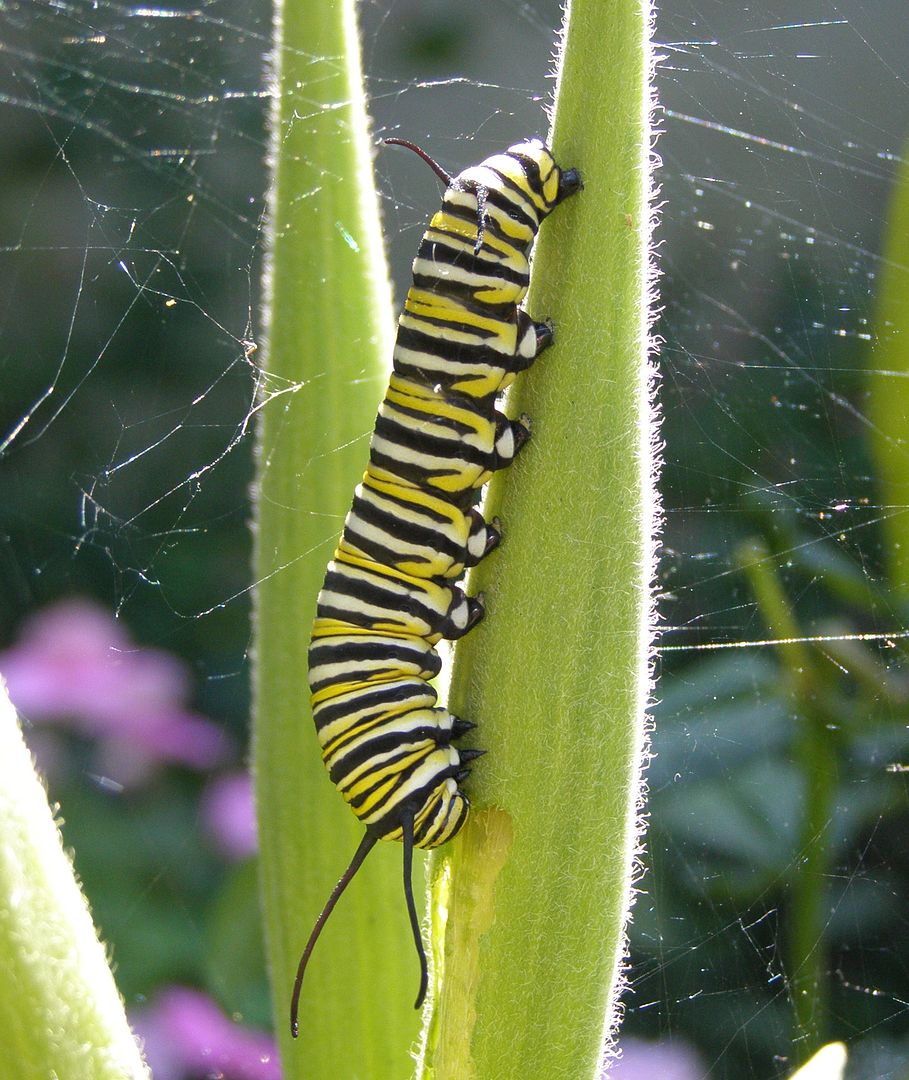
Though the Monarchs have all but migrated their caterpillars are still roaming about the milkweed nibbling on large leaves. Several have already formed a chrysalis and I want to say one's already hatched and taken off. I walked out one day to find a brightly colored Monarch sunbathing on the milkweed and then struggled to fly though it's wings were in perfect condition. After a short flight it landed low on one of our trees. This is exactly what I saw in Monarch who've hatched in past years. Monarch chrysalises are very hard to find. They blend in perfectly with the foliage to most milkweed plants.

Milkweed was one of the first things I planted in my native plant garden and it has been very influential. Though I'd planted it past it's flowering time Monarchs still used it and one happened to make chrysalis in plane sight. Two weeks to the day we found it I watched a Monarch emerge. To this day I've thought what a shame it is that I haven't been able to find any "good" plants for this sort of thing. If you have 4 healthy plants of Milkweed you're almost guaranteed to have a Monarch hatch out in your yard.
Live Butterfly Garden
So I found a product that I will be buying and try out. The thing is timing needs to be done carefully. It's a bit to late in the year to be raising butterflies. Even saving the product for the early spring can be risky. To get the most out of this product I feel it would be best to grow them in the kit first and have them ready to release out in a garden full of host plants. The trouble is their caterpillars naturally feed on flower petals (or in this case "rays") to flowers found in the Aster family. After doing some reading I can't find any Aster family plants that flower in the spring. Thankfully though I may have found the answer.
Another plant Painted Ladies are said to use is our native Pussytoe. It's an odd sort of plant that I'm not familiar with, but it's growing on me the more I read about it. It's a wind pollinator (we won't hold that against it,) that forms colonies. They have separate male and female flowers that oddly enough tend to all produce either one sex or the other depending what "colony" they're in. Perhaps they reproduce by runners and slowly spread? Antennaria plantaginifolia is the taller of the two and could make a nice early blooming perennial beside Daffodils or Tulips. Antennaria neglecta is much much shorter and could easily be planted in the lawn beside Crocuses.
Once these two plants are established it could be simple enough to open the lid of the butterfly kit and turn it over onto the pussytoe before letting them go. Assuming you have a healthy mix of males and females they might lay eggs and hopefully produce a second batch of butterflies. Or an early snack for a hungry bird, worth trying all the same.